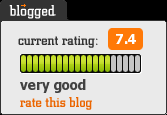 (Image taken from the popular blog, The Future of Reading, www.thefutureofreading.com/)
(Image taken from the popular blog, The Future of Reading, www.thefutureofreading.com/)Tom Peter's article in the November 1, 2009 Library Journal is worth a read for a variety of reasons. Peter expounds lyrically on why libraries should not find themselves left out of the equation as they transition to predominantly digital holdings.
There are a couple of sentences that stick out because of their virtuosity. For example, Peters says that "Books are the primary brand of libraries" which is a simple idea I have never really thought about. It means that when people think of libraries then automatically think books. Why mess with that? Why change the recipe? Librarians should continue to champion books, but they should not miss the forest for the trees and dislocate themselves from new forms of reading.
Peter also discusses the new forms of reading that are present in video games like Second Life and The Sims, etc. Peter also discusses "skimmy dipping" which is when a user "rapidly skimms[ing] through long lists of bibliographic citations, dipping into the abstracts, references, tables, citations, and full text as their interest is piqued." The interesting thing about skimmy-dipping is that it wasn't even possible a quarter century ago. The recent launch of Google Fast Flip (fastflip.googlelabs.com) may make skimmy-dipping even easier and more respectable."
More importantly, Peter argues for readers to agglutinate into a critical mass and devise a "Reader's Bill of Rights." Tenet One: "The reader should be empowered and able to control the mode of reading on his or her e-reading appliance of choice." Tenet Two: "The reader should be empowered and able to control the presentation aspects of the ebook. For visual reading, this includes factors such as font size, font type, font color, and background color." Tenet Three: "Readers, individually and in groups, have the right to add to and embellish a text, as long as the embellishments (e.g., notes, highlighting, marginalia, new characters, new episodes) are clearly distinguishable from the primary text." And so on and so forth.
These are some of the reasons why I have decided to blog about this article, and to push it on my readers, colleagues, peers, and friends.

.png)

No comments:
Post a Comment